Author of the article Marine Hovakimyan
Art historian
The works of Armenian artists commemorating the Armenian Genocide play an important role in Armenian national painting and sculpture.
The canvases depicting genocidal episodes besides their documentary importance have also great artistic value, exceling in different forms of imaginary game, as well as bearing influences of a variety of artistic movements and eminent styles. Being originated in Germany Expressionism, along with Surrealism, Cubism, Abstractionism and numerous other movements has been manifested in these works.
It is important to mention, that the ideological nature of Expressionism was mainly due to the crucial prerequisites, which had originated in Germany. The First and Second World Wars and the black shadow of those hard times took away the progressive notions from creative activities, gave birth to perturbed and pessimistic feelings, and this movement became a response to the most severe contradictions of the century and one of the pronounced expressions of hostility towards the ruling class. German harsh and dark spirit also contributed to the establishment of the melancholic character of this movement.
And along with the formation of such inner world there was also a similar artistic language formed. The distortion, disfigurement and deformed and wry representation of reality, the striving for sharp lines and grotesque give the main characteristics of this movement.
Thus, it can be said that in genocide-related works of Armenian painters the use of elements of Expressionism has not been accidental, since this movement in its origin was also generated and developed in the atmosphere of chaotic war and pressure on the individuality and became a reaction against war and human loss. As the genocide was one of the biggest perils of a human life’s annihilation, it received a wide response among the artists, and the usage of such a consoling way of expression was predictable and logical.
The state of dispense from the existing correlations to European art for a long time in Armenia, and the thematic restrictions made in Soviet Union led to the fact that in the canvases, depicting the genocide and forcible migration, the reverberations of the influence of Expressionism were more apparent in the works of Armenian artists from Diaspora. Among these artists are the representative of Armenian-Italian colony Jirayr Oragyan, Armenian-Iranian repatriate artist Markos Grigoryan, the representatives of Armenian community in U.S.; sculptor, painter Khoren Ter-Harutyan, the founder of the abstract expressionism in Armenian art Arshlie Gorky and painter Sirun Yeretsyan.
The oldest of them is Khoren Ter-Harutyan (1900-1991) who was the witness of genocide and in his numerous works of art he manifested against war and violence. The explicit influence of Expressionism’s means of expression is revealed in his series of paintings and graphic works named “Deir-ez-Zor” and “Genocide” and was mainly expressed through the over-influential distortions of lines, impulsive rhythm, their movements, interrelations and sharp accentuations. In these works the artist has used mainly coal, pencil, gouache and watercolor, and that is why the color in his works seems to be receded into background, mostly serving as a background in which the power of line and expressive deformations were reflected.
Another artist who has touched on the theme of Armenian genocide was Girayr Oragyan (1901-1962). For proving the truthiness of his paintings to the viewer, he did not give up on the naturalistic representation of images. However, the reflection of Expressionism in these works of the artist was not fortuitous manifestation, since the first attempts of distorting human figures were visible in his graphic works of the early period. In works like “Three friends” (1949), “A Sad Song” (1949), “Genocide” (1951), “The Mother’s Grief” and “Torture” Oragyan primarily applies to the same ways of expression; exhausted and deformed human faces, widely opened mouths, prolonged and wavy fingers.
The topic of genocide is represented in works of Arshile Gorky (1904-1948). He has demonstrated the same expressive manner, however this time he has applied to the principles of abstract art and is considered as one of the most significant representatives of Abstract Expressions in American art. According to this movement, art was exempted from consciousness, logical canons, as well as from the conventional using of color relationships and the automatic method was chosen. The process of coloring on canvas should have been unconscious, spontaneous and triggered exclusively by subjective feelings and emotional state. Gorky’s paintings like “Waterfall” (1942-1943), “Water of the flowery mill” (1944), “One year the milkweed” (1944), “Drawing” (1944) and “How my mother’s embroidered apron unfolds in my life” (1944) are executed by using of these peculiarities and also affected by his memories of genocide.
Among the artists who have worked on the issues proposed by Expressionism Sirun Yeretsyan (1951) and Armenian-Iranian artist Markos Grigoryan (1925-2007) are especially distinguished. The latter’s panel comprising of thirteen large-size paintings named “Gate of Auschwitz” (1959-1960) after Auschwitz region is dedicated in this case not to the Armenian genocide, but the Holocaust. In the works of these two artists human being is distorted by the revulsion of life, and it seems that this nightmare of genocide has perverted and disfigured them, depriving them at the same from individual features.
Expressionism in the works dedicated to the Armenian genocide and struggle for liberation is not confined only by mentioned works of art, since many artists in Armenia, as well as from Diaspora in their numerous works have touched upon this topic and have worked out similar artistic issues as well. The works mentioned above are only the ones in which these expressionistic peculiarities and means of expression are disclosed much more accurately and obviously.






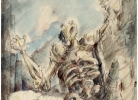

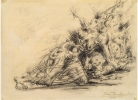

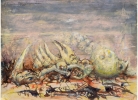
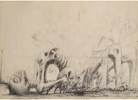
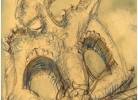
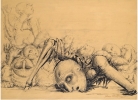
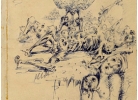

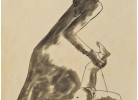
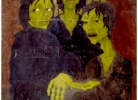
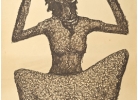
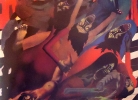
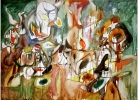
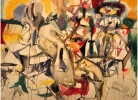




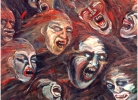
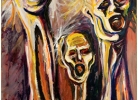
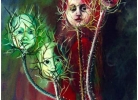
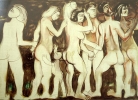
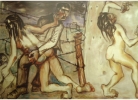
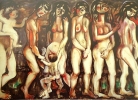

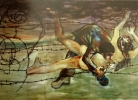
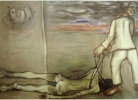






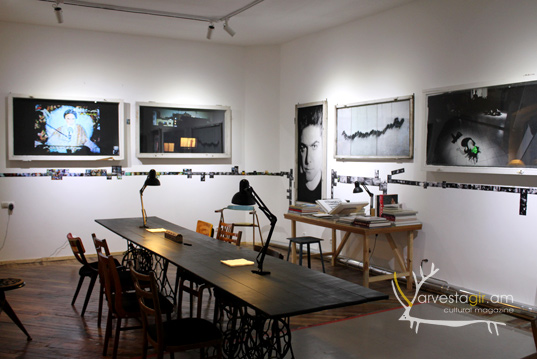
Leave a Reply